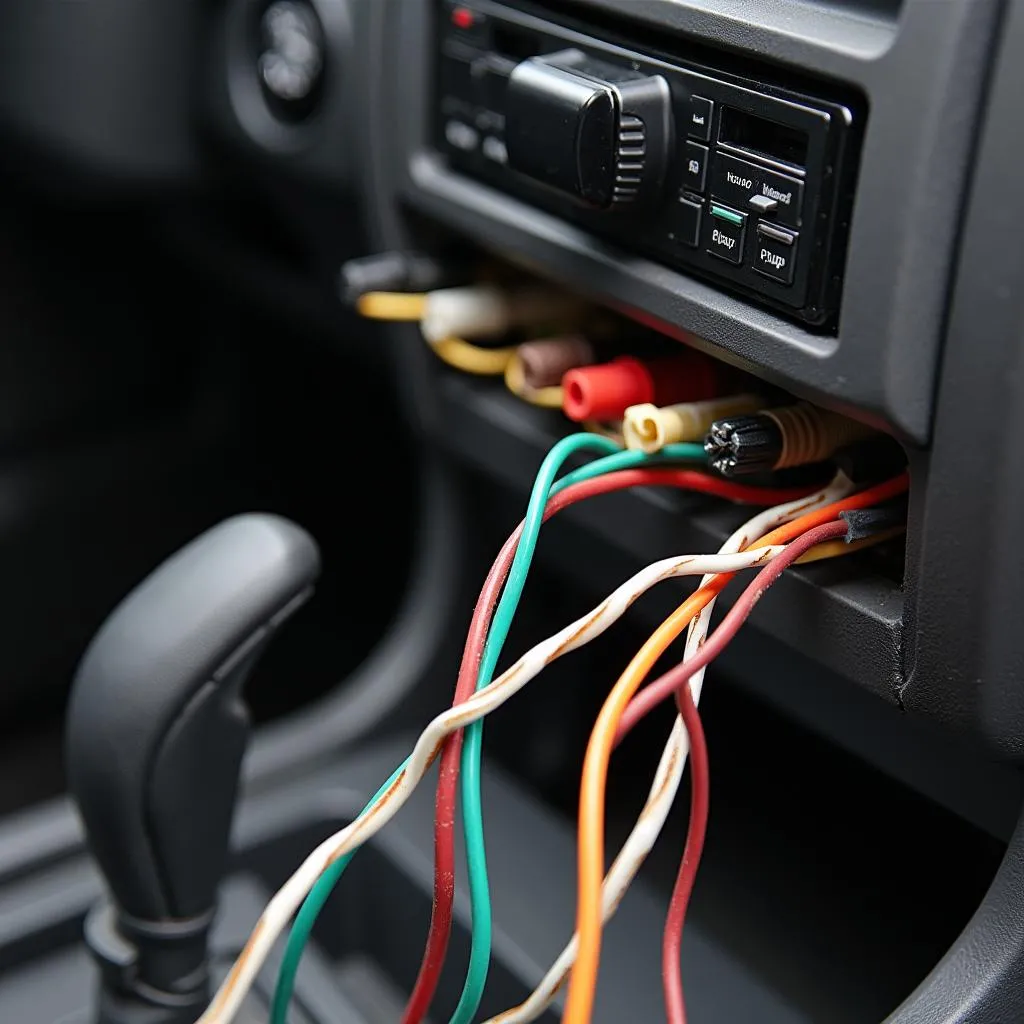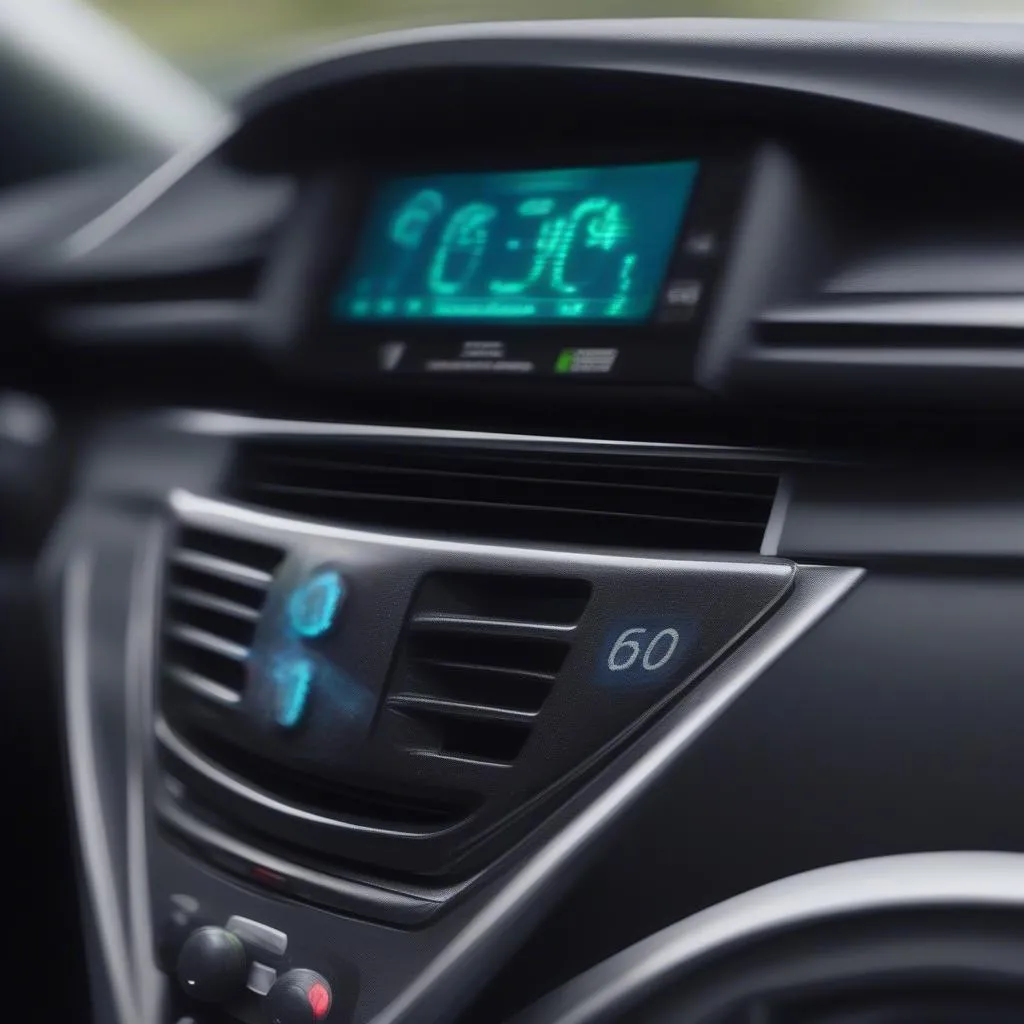The brake pad warning light on your 2012 Audi A8 is a crucial safety feature that alerts you to potential issues with your braking system. Ignoring this warning can lead to reduced braking performance and potentially dangerous driving conditions. This comprehensive guide will explore the common causes of this warning light, provide effective solutions, and offer expert advice on maintaining your Audi A8’s braking system for optimal performance.
Understanding Your Audi A8’s Brake Pad Warning System
Your Audi A8 is equipped with a sophisticated electronic brake pad wear sensor system that constantly monitors the thickness of your brake pads. When the sensors detect that the brake pads have worn down to a critical level, they trigger the brake pad warning light on your dashboard.
Common Causes of a 2012 Audi A8 Brake Pad Warning Light
While worn brake pads are the most common culprit behind the warning light, several other factors can trigger it:
- Worn Brake Pad Sensors: The sensors themselves can wear out or become damaged over time, leading to a false warning light.
- Damaged Brake Pad Wiring: A short circuit or break in the wiring harness connecting the sensors to the vehicle’s electrical system can also illuminate the warning light.
- Faulty Brake Fluid Level Sensor: In some cases, a malfunctioning brake fluid level sensor can trigger the brake pad warning light, even if the brake pads are in good condition.
- Issues with the ABS System: Problems with the Anti-lock Braking System (ABS), such as a faulty wheel speed sensor, can sometimes trigger the brake pad warning light.
 Audi A8 Brake Pad Sensor
Audi A8 Brake Pad Sensor
Troubleshooting the Brake Pad Warning Light
Before assuming the worst, here’s a step-by-step guide to troubleshoot the warning light:
- Check Your Brake Pads: Visually inspect your brake pads for wear. If you see less than 1/4 inch of friction material remaining, it’s time for a replacement.
- Inspect the Brake Pad Sensors: Carefully examine the brake pad wear sensors for any signs of damage or wear. Replace them if necessary.
- Check the Brake Pad Wiring: Inspect the wiring harness for any loose connections, exposed wires, or signs of damage. Repair or replace the wiring as needed.
- Inspect the Brake Fluid Level: Ensure the brake fluid reservoir is filled to the appropriate level with the correct DOT specification fluid.
- Scan for Diagnostic Trouble Codes: Using an OBD-II scanner, check for any stored diagnostic trouble codes related to the braking system. These codes can provide valuable insights into the root cause of the problem.
When to Seek Professional Help
If you’re unable to diagnose or resolve the issue yourself, it’s crucial to consult a qualified mechanic or Audi specialist. They have the expertise, tools, and diagnostic equipment to accurately diagnose and repair any problems with your braking system.
“Ignoring a brake pad warning light can have serious consequences,” cautions John Miller, a seasoned Audi technician with over 20 years of experience. “It’s always better to err on the side of caution and have your braking system inspected by a professional.”
Preventing Future Brake Pad Warning Lights
Proactive maintenance is key to preventing premature brake pad wear and avoiding unexpected warning lights. Follow these essential tips:
- Adhere to a Regular Brake Inspection Schedule: Consult your Audi A8 owner’s manual for the recommended brake inspection intervals.
- Adopt Smooth Braking Habits: Avoid hard braking whenever possible. Gradual braking reduces wear and tear on your brake pads and rotors.
- Use High-Quality Brake Pads: Invest in premium brake pads specifically designed for your Audi A8. They offer superior performance, longevity, and noise reduction.
Conclusion
Addressing the brake pad warning light on your 2012 Audi A8 promptly is essential for maintaining a safe and reliable driving experience. By understanding the common causes, troubleshooting steps, and preventive measures, you can ensure optimal braking performance and peace of mind on the road. Remember, your safety is paramount – never ignore a warning light related to your braking system.


